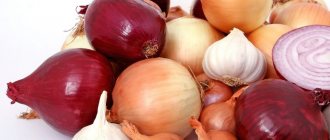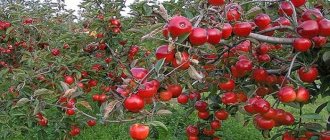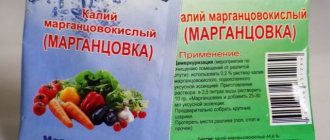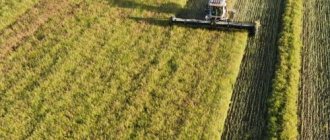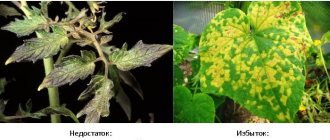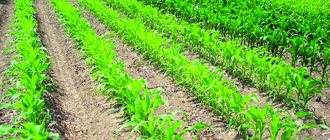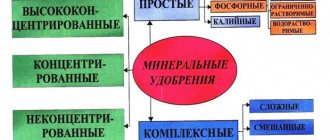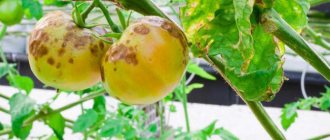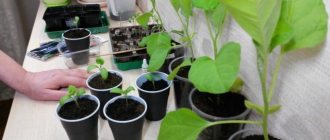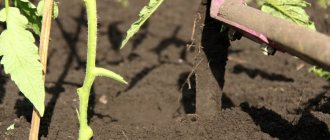16187
Every gardener has heard about the need for fertilizers to grow tasty crops and prevent diseases of garden crops. Beginners will have to understand the types of fertilizing and the timing of their application. Nitrogen and potassium fertilizers are most often used; there are many names. Beginning summer residents have to figure out which of them to use in the spring and during fruiting in order to provide timely assistance to garden crops and positively affect the quality of the harvest.
Fertilizing strawberries with potassium solution
What fertilizers are potassium based?
Potassium mineral supplements come in different types. They are conventionally divided into 2 groups: complex and salt-like. The latter are highly soluble in water and are used more often. Proper selection of potash fertilizers involves the correct use of the compositions and compliance with the dosage.
The mineral is extracted from the soil. The source of the useful element is potassium ore from natural deposits. Purification from impurities occurs industrially.
Why do we need potash fertilizers? Why can’t any garden do without adding liquid or salt-like fertilizers to the soil? The main function of potassium mineral fertilizers is to replenish the need of plant organisms for this chemical element. Proper application of potash fertilizers also helps protect crops from diseases.
A deficiency of the element causes plant diseases such as powdery mildew and rust.
Using potassium in plants:
- metabolic processes in cells are normalized;
- fluid balance is stabilized;
- the work of enzymes and photosynthesis, necessary for increasing weight, are activated;
- high-quality assimilation of nitrogen and carbon is ensured.
It has been noted that potassium salts have the property of slowing down accelerated growth and rapid ripening of fruiting bodies. This is all the more valuable because it prevents excessive accumulation of phosphoric acid in plant tissues.
Reviews about the application
On the Internet you can find many reviews from real customers who have already tested the effectiveness of the fertilizer in practice. Among them there are many comments about the universal additive Nitroammofosk:
Natalya, Stavropol: “I have been using fertilizer for several years, adding it not only to potatoes, but also feeding my garden (I have a lot of fruit trees and rose seedlings). It copes with its task above average, but since the granules practically do not dissolve in water, I strongly recommend pouring them directly into the holes when planting or when digging.”
Svetlana, Komarichsky district: “I’ve been growing potatoes for many years, although there are greenhouses with cucumbers and a good row of tomatoes, so I ate the dog for feeding, having tried Nitroammofoska. I usually add it when planting, the harvest is excellent, so for now I’ll stick to this option (believe me, I have something to compare with).
Tamara, Vinnitsa: “An excellent complex fertilizer for its price, but not without its drawbacks. Remember that Nitroamaphoska is a rather aggressive additive and if you don’t want to accumulate nitrates in the soil, then you need to periodically change it to other complex fertilizers.”
In general, there are much more positive reviews about potassium preparations than negative ones, although it is better to be guided by your own experience, taking into account the type of soil in the garden, the properties of the crops grown and many other determining factors.
Potassium-demanding crops
Where is potassium found inside plants? The “favorite” zones are the cytoplasm and cell sap. Roots, seeds and tubers contain less mineral than young leaves and stems. If you do not fertilize flowering plants, budding may stop or the flowers will be small.
With a significant lack of potassium, ovaries may not form at all. Particularly sensitive to the mineral content in the soil are: sunflower, buckwheat, beets, potatoes, carrots. Most grain crops are not so sensitive to potassium salt deficiency.
Potassium deficiency and excess: symptoms
To determine when plants need potassium, you should know the signs that signal potassium starvation.
It's time to contribute if:
- growth stops prematurely;
- internodes on young shoots are shortened;
- the leaves change their shape;
- productivity falls;
- Plant immunity weakens, they begin to get sick more often;
- the leaves become discolored, wither, and dry out, and these processes begin either from the edge of the leaf or from its tip, and a brown stripe appears between the healthy part and the dried part;
- if there is a very strong lack of potassium, brown spots form in the center of the affected leaves;
- the leaves of cruciferous plants, on the contrary, become dark green in color, between the veins, and their edges turn bronze;
- citrus fruits, nightshades: internodes grow short, the color of young leaves is green with blue; the leaves curl upward and become wrinkled; old foliage turns yellow, brown or bronze; on old leaves, brown, necrotic spots grow, as well as frequent streaks, which then merge - this causes the foliage to die and fall off ahead of schedule;
- fruit ripening is very uneven;
- the roots do not develop, weaken and turn brown.
Not only a lack of potassium is harmful to plants, but also its excess in them.
Overfed if:
- the foliage turns pale and loses color;
- Plants absorb nitrogen fertilizers and microelements with great difficulty, or cannot absorb them;
- the pulp of the fruit turns brown;
- mosaic spots appear on older leaves; the foliage withers and falls prematurely;
- tissue necrosis.
Important! When applying fertilizers, you should remember that it is harmful to either underfeed or overfeed plants. Any supplements are still chemicals, so the prescribed doses must be strictly observed. Everything is good in moderation.
How to determine the lack of a mineral in the soil?
If plants are cultivated on light peat, they are in dire need of potassium-containing fertilizers. It is easiest to determine the insufficient content of an element in the soil in the summer, based on the following signs:
- the appearance of brown spots on the leaves;
- the formation of “marginal burns” – areas of tissue death;
- veins, “recessed” deeply;
- thinning of stems;
- change in the shade of foliage to bluish, yellow;
- growth slowdown;
- the formation of wrinkles on the leaves;
- suspension of budding.
The amount of potassium present in the soil depends on the structure of the soil. Loamy soils or clay can retain the beneficial element as much as possible.
Signs of potassium deficiency in plants
It is generally accepted that only depleted soils are deficient in microelements. But that's not true.
On a plot of land where a large number of vegetables and fruits are grown, there will be a deficiency of potassium every year. Naturally, on peat soils the signs of deficiency will be more pronounced than on chernozem.
Potassium starvation can be noticed by the following manifestations:
- stopping the growth and development of the entire plant. But most noticeable is the suspension of bud formation;
- the appearance of wrinkles, curling of leaves;
- thinning of the stem, branches, shoots;
- the veins on the leaves are barely noticeable, as they plunge deep into the tissue;
- the presence of “marginal burns” indicates tissue death;
- change in the shade of the green part (yellowing, the presence of blue and bronze);
- brown spot.
Need to know! These same signs may indicate an excess of potassium in the soil. It is possible to establish exactly what is happening to the plant only using the exclusion method. The farmer must have a calendar of gardening work, where applications, watering and treatments are clearly visible. When viewing the data, it is clear what exactly could have influenced the deterioration of the culture.
Types of potash fertilizers
The production of potash fertilizers is represented by several types of means, each of which is optimal in a specific situation.
Potassium chloride (KCl) mixed with NaCl
This fertilizer looks like a pink powder and contains up to 60% active ingredient. The fertilizer contains chlorine. This fertilizer is the most common among gardeners.
Optimal dosage: 20 g per 1 sq. m.
Potassium chloride should not be used for vegetables and berry bushes.
Potassium sulfate (K2SO4)
Chlorine-free fertilizer, excellent for all vegetables. The fine-crystalline composition of potassium sulfate consists of 50% active substance. The fertilizer is yellowish in color.
Thanks to the sulfur, magnesium and calcium contained in potassium sulfate, the fertilizer is ideal for legumes. In summer, this composition is good for feeding cabbage and radishes.
Wood ash (K3PO4, K2CO3)
This mineral supplement is natural, widely available and inexpensive. Wood ash contains approximately 11% potassium and contains many useful trace elements.
Wood ash is not mixed with manure and other nitrogen-containing mixtures.
You can add wood ash to the soil at any time, even in winter (in a greenhouse). For 1 m2, 1 liter jar is enough. Wood ash is one of the best potash fertilizers without chlorine.
Root vegetables love this composition the most. In addition to the main mineral, the fertilizer contains a lot of calcium, which reduces the acidity of the soil.
Potassium salt (KCl*MgSO4*3H2O) with an admixture of NaCl
Chlorine-containing fertilizer with a concentration of the main component of about 40%. Not all plantings accept potassium salt.
The use of the composition on soils with a predominance of sand is especially effective. Experts believe that spring and summer are not the best time to use fertilizer. It would be optimal to do this in the fall, feeding fruit trees and berry bushes.
Before using this fertilizer, it is necessary to clarify how the plant treats it. Even if a crop that is indifferent to the action of chlorine is processed, the composition should be applied with caution.
Extraction of potassium salt
In nature, layers of potassium and rock salt are formed close to each other. The formation of salt particles occurs through the evaporation of salt quarries followed by cooling.
There are deposits in many countries of the world. The largest of them are located in Russia (Gremyachinskoye), Canada (Sakchevan basin), Belarus (Starobinskoye), USA, Germany and other countries.
Potassium salt, like rock salt, is mined in mines. Salt formations are fragile and unstable, putting the lives of salt miners in constant danger.
After extraction, low-concentration layers of natural salt are subjected to mechanical processing, during which it is separated into sylvinites and kainites. Richer rocks are processed in chemical factories.
Extraction and production of potassium salt - video
Sources
- https://planeta-dachi.ru/sovety/chtoby-poluchit-horoshiy-urozhay-vam-nuzhno-udobrenie-kaliynaya-sol/
- https://agrotek23.ru/postrojki/kalijnaya-sol-formula-himicheskaya.html
- https://SuperUrozhay.ru/mineralnye-udobreniya/kalijnye-udobreniya-osnovnye-vidy-i-osobennosti-ix-primeneniya.html
- https://www.ogorod.ru/ru/now/fertilizers/13620/Kalijnye-udobrenija-chto-jeto-takoe-ih-nazvanija-znachenie-i-primenenie.htm
- https://pochva.net/industrial/kalijnaya-sol.html
- https://stroy-podskazka.ru/udobreniya/kalijnaya-sol-chto-eto-takoe-i-kak-primenyat/
- https://glav-dacha.ru/udobrenie-kaliynaya-sol/
Fertilizers from industrial waste
Many summer residents prefer to use improvised means to fertilize their garden plants. Let's look at the most popular substances.
Cement dust (K2CO3, KHCO, K2SO4, CaCO3, MgO, etc.)
The composition is chlorine-free and is used for plants that do not tolerate chlorides well. Thanks to its alkalizing properties, cement dust successfully combats high soil acidity. Sometimes the substance is used simultaneously with red kainite, a mineral containing potassium chloride and magnesium. To obtain a healthy harvest, it is best to till the soil with the raw materials in question in the fall.
Cement dust is usually applied to podzolic soils. The fertilizer contains more than 30% potassium and is well absorbed by plant cells. Sulfates, silicates, bicarbonates provide the fertilizer with a high degree of solubility.
Furnace ash
The fertilizer is chlorine-free. Useful potassium oxides are present in hardwood waste (more than 14%). Coniferous trees contain much less potassium when burned.
In order for the fertilizer to be better absorbed, the composition should not contain elements of recycled waste.
Many consider feeding complex due to the presence of a small amount of phosphorus in it. Furnace ash is successfully used on acidic soils.
Other sources of potassium - what are their names?
Other types of preparations are also used to feed plants with potassium:
- Potassium nitrate (potassium nitrate) is a complex fertilizer consisting of potassium in an amount of 44% and nitrogen in an amount of 13%. It is used for most garden crops, and is applied during the growing season, flowering and fruit set. A small percentage of nitrogen does not cause unnatural growth of green mass, but only strengthens the plant. Potassium nitrate is loved by root crops and berry crops.
- Potassium salt is an analogue of potassium chloride, which is unsuitable for feeding some plants due to the high percentage of chlorine. Potassium content is 40%.
- Calimagnesia is another complex consisting of potassium (up to 30%), magnesium (about 10%), sulfur (17%). Sold as a pinkish powder or granules. Dissolves quickly in liquid, but leaves sediment. The advantage is a minimum of chlorine (1-3%), suitable for almost all crops. Calimagnesia is well accepted by potatoes, legumes, fruit bushes and trees. When used correctly, the level of starch in potato tubers increases, and sugar and ascorbic acid in berries. A noticeable result is observed on sandy, peat, and loam soils only with sufficient moisture.
- Potassium carbonate, nitrophoska, nitroammophoska and liquid complex fertilizers also serve as a source of potassium.
Video about the timing and norms of using wood ash for fertilizing.
Among the natural sources, it is worth highlighting wood ash. It contains 10% potassium and contains magnesium, phosphorus, iron, copper and other elements. Ash is applied throughout the growing season. In autumn and spring, the additive will improve the nutritional properties of the soil, and in summer it will strengthen the developing plant.
